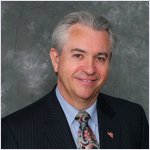By John J. Graeber DMD MAGD MALD FICD
Air Abrasion units are not new. The first units were introduced to the profession in 1948. The technique did not enjoy widespread acceptance primarily because of the inability to create retentive forms for amalgam restorations. In 1993, the technology was reinvented by the American Dental Laser Company in 1993 and enjoyed considerable acceptance in the preparation of teeth for bonded composite materials. Approximately 20% of dental offices purchased units. The most common reason given for non-purchase was the perception that the technique was “messy”. This perception had a basis in reality: 27 micron aluminum oxide can stay airborne for a significant period of time due to its small weight and kinetic energy of each particle.
Despite the disadvantages, air abrasion remains a viable technique in cavity preparation for direct bonded composite resins. Aluminum oxide at 27 microns is second only to diamond particles in known abrasive capability. The small size of the abrasive particle is generally well tolerated by patients without the need for local anesthesia. The harder enamel structure abrades faster than softer dentinal surfaces. The micro-pitted surfaces have exhibited higher bond strengths than non-abraded surfaces_1_. The development of the Erbium hard tissue lasers in the late ‘90’s took conservative practitioners’ attention away from the air abrasive technique.
Unfortunately, the hard (or all-tissue) lasers have not lived up to their promise in this author’s opinion. The costs of the units has continually escalated to the mid $80,000 level. The cost of maintenance can exceed $10,000 annually and most of all, the ablation speed has not appreciably improved in the past 12 years. Tip cost can often be $10 per prep. And in no realistic way can crowns be prepared. While it is possible to prepare most cavities with no need for local anesthesia, this is very technique sensitive.
Air Abrasion Improvements:
At least one Manufacturer has made a significant improvement over second generation air abrasion units. The Velopex Aquacut unit incorporates a water shroud around the main air abrasive stream.
The chief advantage is virtually eliminating the mess of the Kinetic particle. This is made possible by simply adding an external water introduction device onto the most efficient handpiece design. The addition of the water stream surrounds the kinetic particles and prevents most particles from becoming airborne after striking tooth structure. The addition of water creates a slurry of particles which is easily vacumed away with high speed intra oral evacuation. Virtually no particles can be found in the extraoral environment after treatment.
For most operative procedures, the same or less sensitivity is experienced by the patient. The addition of water onto cut dentin helps maintain normal dentinal hydration. Water apparently also adds to the volume of structure removed. The same adjacent-tissue protection steps are employed as with the dry technique. The AquaCut unit has a separate air polishing canister containing sodium bicarbonate which allows the unit to switch back to air polishing during prophylaxis procedures.
The Aquacut unit is attractively priced in the $5000 range.
The cost of abrasives is negligible per preparation and annual maintenance for this pneumatic-powered unit is unusually simple when compared to second generation dry units. The unit I have used daily has not required any maintenance in nearly three years. The unit is powered with office compressor air between 80-100psi. Aquacut Third Generation represents a significant improvement over pervious units at a very affordable cost.
References:
1. Kinetic cavity preparation effects on bonding to enamel and dentin. Laurel, K, Lord, W, Beck, M. J Dent res 1993; special issue, Abstract 1437.
Figure 1 - Dr. John J. Graeber DMD MAGD MALD FICD
Clinical Applications:
Class I Preparation:
Figure 2a - Maxillary molar with carious fissure diagnosis with the aid of Diagnodent instrument (Kavo, Inc).
Figure 2b - Initial abrasion of the carious fissures of the occlusal surface with Air/water stream of Aquacut at 80 PSI.
Figure 2c - Caries indicator dye ( Ultradent Seek ) placed once visible caries have been removed to check for hidden/additional caries.
Figure 2d - Caries completely removed and preparation cleaned with air/water syringe. Preparation is now ready for adhesive restoration steps. Note irregular preparation outline and conservative tooth structure removal.
Class II Preparation:
Figure 3a - Carious lesions affecting both occlusal and distal surfaces of maxillary molar.
Figure 3b - Class II preparation completed. Note that each occlusal “pit” was treated individually without the GV Black principle of connecting each of the lesions. More of the tooth’s inherent strength is preserved by individualizing caries removal. The proximal lesion is also treated separately from the occlusal lesions.
The time required to complete this tooth preparation was less than 3 minutes.
Class III Preparation:
Figure 4a - Adjacent tooth and gingival structure is protected from overspray by mylar strip and plastic wedge.
Figure 4b - The Aquacut handpiece nozzle is placed in near contact with the carious lesion.
Figure 4c - After enamel removal, soft carious dentin can be easily removed with hand instruments.
Figure 4d - Completed preparaton checked with caries indicator solution and rinsed out.
Figure 4e - Cavity restored with Composite restoration ( TetricEvo Ceram, IvoclarVivadent)

















